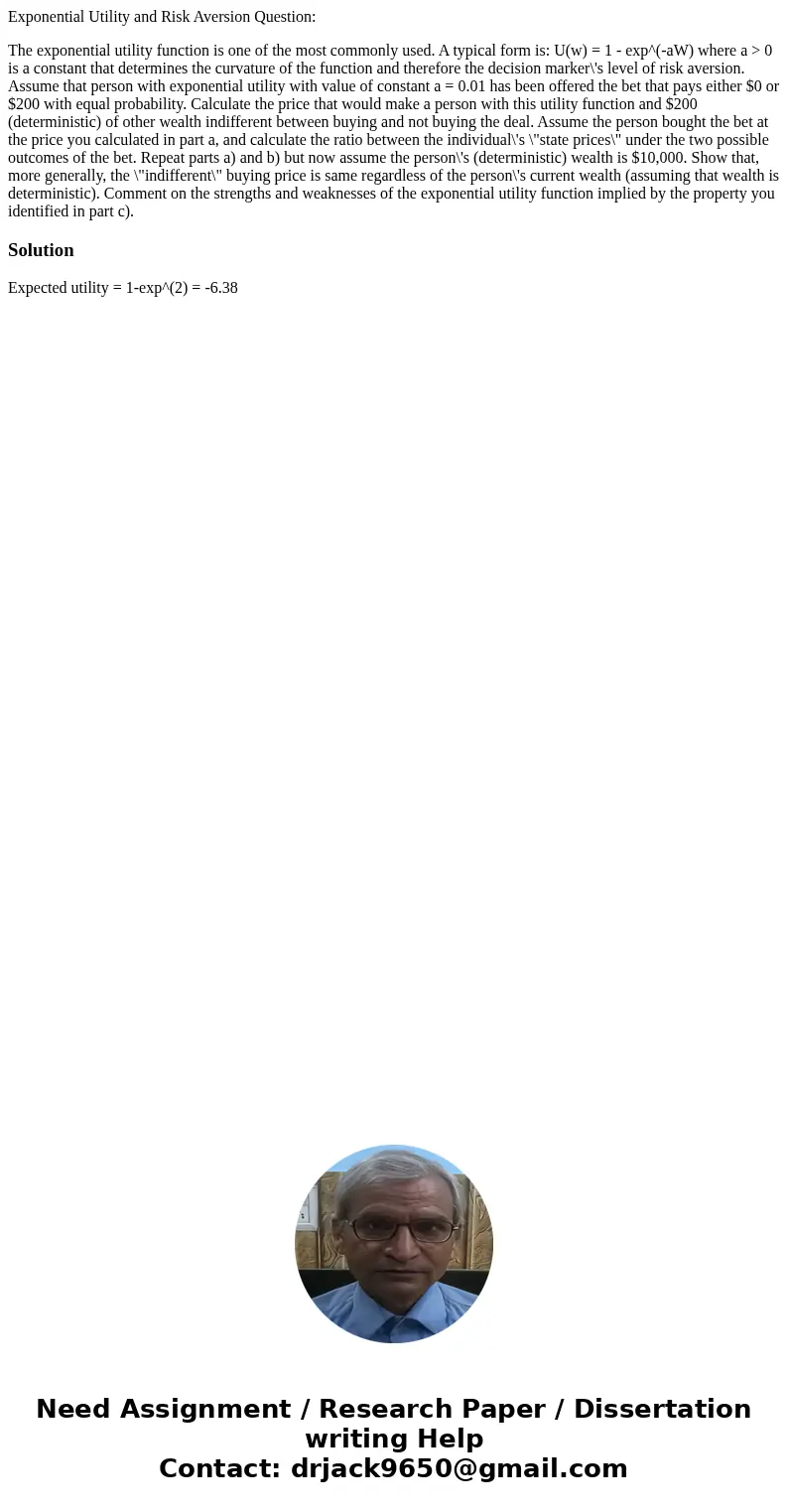Exponential Utility and Risk Aversion Question The exponenti
Exponential Utility and Risk Aversion Question:
The exponential utility function is one of the most commonly used. A typical form is: U(w) = 1 - exp^(-aW) where a > 0 is a constant that determines the curvature of the function and therefore the decision marker\'s level of risk aversion. Assume that person with exponential utility with value of constant a = 0.01 has been offered the bet that pays either $0 or $200 with equal probability. Calculate the price that would make a person with this utility function and $200 (deterministic) of other wealth indifferent between buying and not buying the deal. Assume the person bought the bet at the price you calculated in part a, and calculate the ratio between the individual\'s \"state prices\" under the two possible outcomes of the bet. Repeat parts a) and b) but now assume the person\'s (deterministic) wealth is $10,000. Show that, more generally, the \"indifferent\" buying price is same regardless of the person\'s current wealth (assuming that wealth is deterministic). Comment on the strengths and weaknesses of the exponential utility function implied by the property you identified in part c).Solution
Expected utility = 1-exp^(2) = -6.38

 Homework Sourse
Homework Sourse